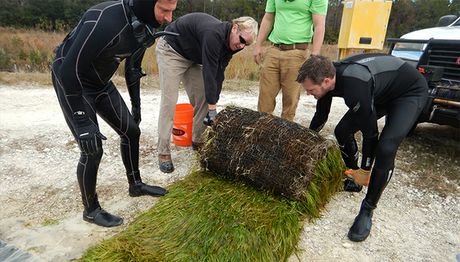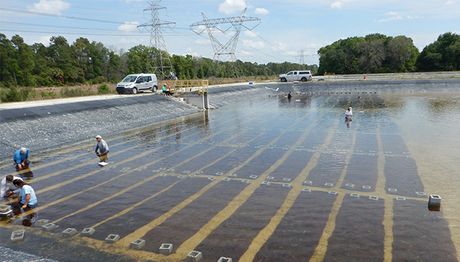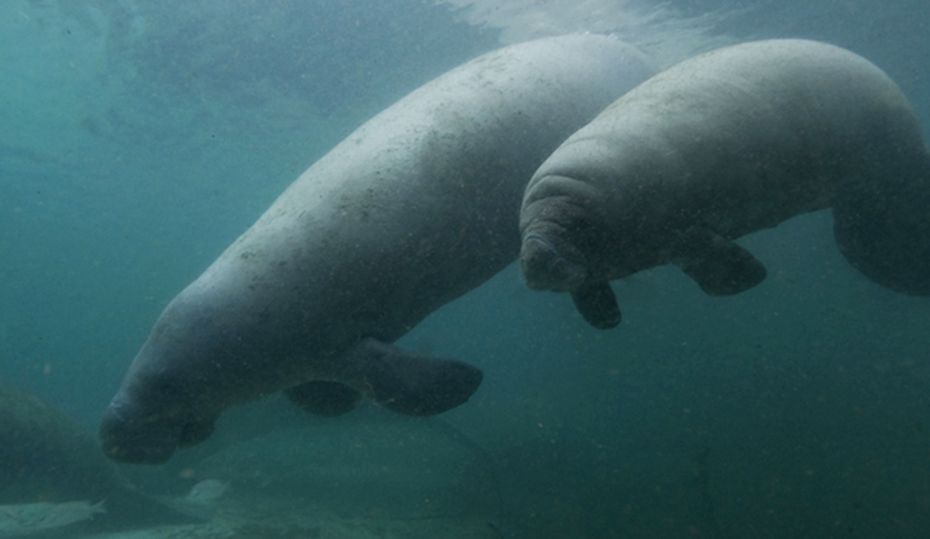Sprouting from the bottom of Florida’s crystal-clear springs, eelgrass makes its job look easy. The green strands sway as boats and swimmers pass by, but they’re hard at work improving water quality and providing a safe haven for aquatic creatures.
Duke Energy helped reintroduce nourishing eelgrass in 2014 into Kings Bay, a central Florida freshwater spring, and the plant is thriving.

“The grass looks great,” said Eric Latimer, lead environmental health and safety professional at Duke Energy’s Crystal Marie Mariculture Center. “The plant is surviving and spreading.”
The Southwest Florida Water Management District monitors water quality, and results look promising.
“The number of animals seeking food and shelter in the eelgrass has increased,” Latimer said. “The Florida Fish and Wildlife Conservation Commission recently surveyed the number of fish in various areas and found four times the number of species hanging out near the eelgrass mats.”
The quality of Florida springs has deteriorated over time because of harmful algae called Lyngbya (pronounced "ling-bee-ya") that chokes native vegetation.
Scientists have long thought reintroducing the eelgrass would help stifle the algae, but they had nowhere to grow it until 2014. That’s when Latimer offered a solution: Grow the plant in ponds at the Mariculture Center.
The center in Citrus County is an 8,100-square-foot multi-species hatchery that cultivates and releases 100,000 young fish into the Gulf of Mexico each year. Built in 1991, the center has released more than 3.6 million fish and crustaceans, becoming one of the most successful marine-stocking programs in Florida.
Researchers applaud his idea.
“The key to restoring our springs is to establish healthy underwater grass beds, essential as habitat for fish and also for maintaining good water clarity,” said Chris Anastasiou, chief scientist at the Southwest Florida Water Management District, the group working with Duke Energy to grow the eelgrass.
“These springs are national treasures,” he said. “We want to preserve and improve wherever we can.”

The perfect solution
For Latimer, offering to help was the logical thing to do.
“I realized we could help solve the problem,” he said. “Our ponds are the perfect place to grow the eelgrass. This project is also a great fit for our company’s commitment to environmental stewardship, so I reached out to the springs restoration team with the idea.”
After the water management district met Latimer’s offer with enthusiasm, Duke Energy got to work planting and growing mats of the underwater sod-like plant. The process involved determining what worked best and how to successfully grow the eelgrass. Latimer’s team tried different planting techniques, varying the water depth, testing different fertilizers and, most importantly, investing time to ensure the eelgrass mats were free of algae and other materials that can hinder growth.
Perfecting the process took nearly a year.
“We were able to grow the grass, but we had to find out if it would survive in the natural environment,” Latimer said.“We knew we were on track after manatees ate the grass and it was able to withstand this grazing pressure and regrow just like a pasture for livestock.”
Sod transplanted in mats
Once the team got it right, they had 15-by-3-foot mats of eelgrass that look like very green carpet runners. The mats are made from coir, a natural fiber extracted from the husk of coconuts.
Just like sod that’s planted in a yard, the grass has attached itself to the bottom of the springs to replace the lost native vegetation.
"The eelgrass project enables us to expand our mission," Latimer said. "We have the facilities and the ability to help try to restore the springs. It’s a cause I believe in."
Why are springs so important?
Lush, flowing springs – naturally occurring places where water flows from an underground aquifer to the earth’s surface – dot the landscape in Florida and attract thousands of visitors each year. Geologists believe the state may have the most freshwater springs on the planet, with more than 900. The springs support entire ecosystems with unique plants and animals. Some flow into rivers that depend on the springs’ fresh water. The springs also represent the visible part of the Floridan aquifer, the underground water that supplies most of the state’s drinking water.
Learn more about the Florida springs restoration project:


